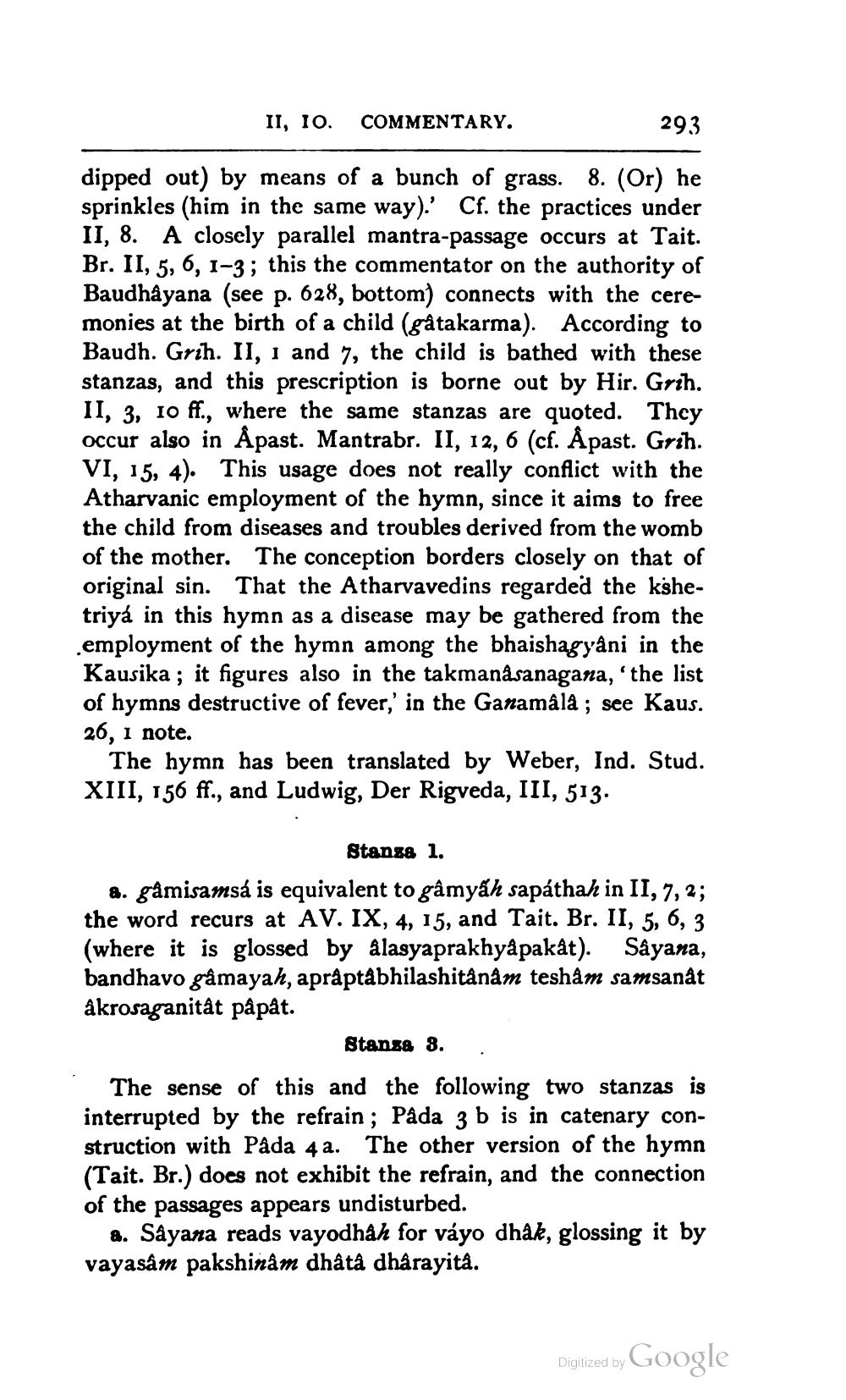________________
II, 10. COMMENTARY.
293
dipped out) by means of a bunch of grass. 8. (Or) he sprinkles (him in the same way). Cf. the practices under II, 8. A closely parallel mantra-passage occurs at Tait. Br. II, 5, 6, 1-3; this the commentator on the authority of Baudhayana (see p. 628, bottom) connects with the ceremonies at the birth of a child (gatakarma). According to Baudh. Grih. II, 1 and 7, the child is bathed with these stanzas, and this prescription is borne out by Hir. Grih. II, 3, 10 ff., where the same stanzas are quoted. They occur also in Åpast. Mantrabr. II, 12, 6 (cf. Åpast. Grih. VI, 15, 4). This usage does not really conflict with the Atharvanic employment of the hymn, since it aims to free the child from diseases and troubles derived from the womb of the mother. The conception borders closely on that of original sin. That the Atharvavedins regarded the kshetriya in this hymn as a disease may be gathered from the employment of the hymn among the bhaishagyâni in the Kausika ; it figures also in the takmanasanagana, 'the list of hymns destructive of fever,' in the Ganamâlâ ; see Kaus. 26, 1 note.
The hymn has been translated by Weber, Ind. Stud. XIII, 156 ff., and Ludwig, Der Rigveda, III, 513.
Stansa 1. a. gamisamsá is equivalent to gâmyah sapáthah in II, 7,2; the word recurs at AV. IX, 4, 15, and Tait. Br. II, 5, 6, 3 (where it is glossed by klasyaprakhyåpakat). Sayana, bandhavo gamayah, apråptábhilashitanam tesham samsanat âkrosaganitât pâpåt.
Stansa 8. The sense of this and the following two stanzas is interrupted by the refrain ; Pada 3 b is in catenary construction with Påda 4 a. The other version of the hymn (Tait. Br.) does not exhibit the refrain, and the connection of the passages appears undisturbed.
a. Sayana reads vayodhåh for váyo dhâk, glossing it by vayasâm pakshinam dhâtå dhårayità.
Digitized by Google




